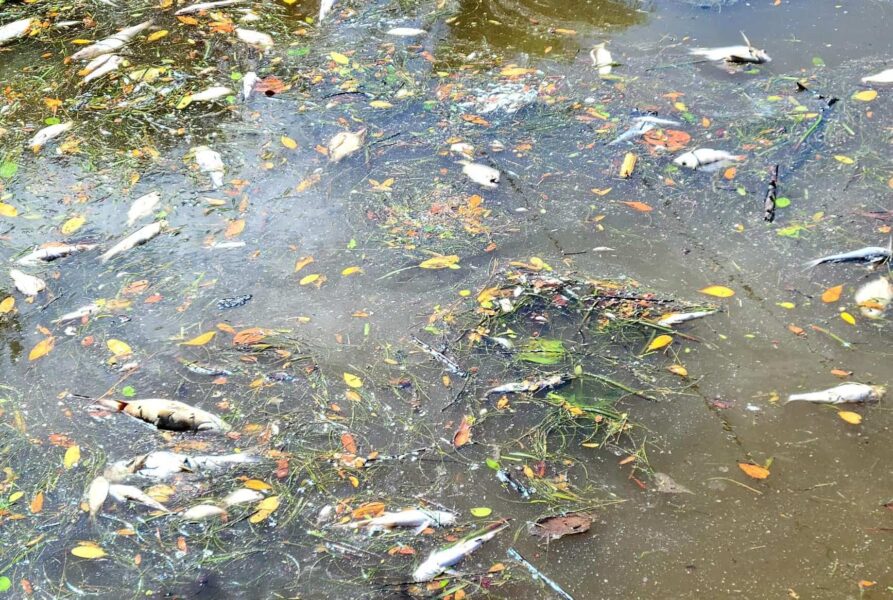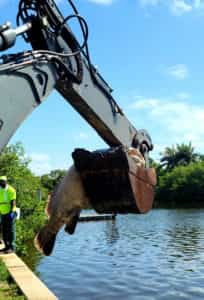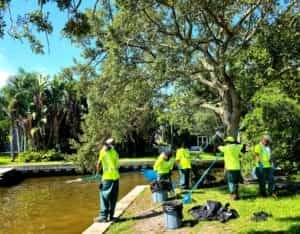Thrive
Why is Tampa Bay currently a marine graveyard?

Part 2 of 2.
With St. Petersburg in the midst of the worst red tide it has faced since 1971, it is perhaps understandable that both residents and city officials are looking for somewhere to place the blame.
At Thursday’s city council meeting, city officials brought in experts to give a thorough explanation of what causes red tide. While many people have pointed fingers at the Piney Point wastewater spill two months ago – and experts agree that it has exacerbated the problem – some of the other factors may surprise you.
Dr. Kate Hubbard, Research Scientist for the Florida Fish and Wildlife Commission, said the stage was set with an unusually dry winter and spring. The salinity levels in Tampa Bay have also been abnormally high, which she said provides a perfect habitat for this organism to grow in.
 “We’ve also had Piney Point,” added Hubbard, referring to the former phosphate plant that was compromised to the point that officials had to release 215 million gallons of nutrient-rich and toxic wastewater to prevent a collapse, and an even more dangerous spill. “That provided unprecedented amounts of nutrients, so that is potentially contributing to the bloom right now.”
“We’ve also had Piney Point,” added Hubbard, referring to the former phosphate plant that was compromised to the point that officials had to release 215 million gallons of nutrient-rich and toxic wastewater to prevent a collapse, and an even more dangerous spill. “That provided unprecedented amounts of nutrients, so that is potentially contributing to the bloom right now.”
Hubbard added that as with this year, there was a protracted drought preceding the event in ’71 as well.
“For historical sake, it’s important to keep these things in mind,” said Hubbard. “We do have red tide frequently in the region, and out of the past 10 years, we’ve had red tide in the Tampa Bay at least six of those years. But again, we haven’t seen the magnitude that we do now or the spatial extent.”
J.P. Brooker, Director of Florida Conservation for the Ocean Conservancy, shed even more light on Karenia brevis – the marine dinoflagellate that causes red tide.
Brooker started by explaining that Karenia brevis and red tide have been naturally occurring since before the dawn of man and are a vital part of the Gulf’s ecosystem. Perhaps surprisingly, he said the first source of the calamity is from the Saharan air layer – which has been especially prominent the last week. While many locals know that Saharan dust makes for beautiful sunsets and discourages tropical systems from forming, that dust is also rich in iron.
Brooker said that the air layer picks up dust and iron as it sweeps over the African continent, and is then carried by wind across the Atlantic and deposited into the Gulf of Mexico. Bacteria then feast on the iron and deposits nitrogen in the water, which is the food of choice for Karenia brevis.
The ensuing red tide releases toxins into the water that kill marine plants and animals, which then release more nitrogen, and the cycle of death continues. Warming water temperatures also play a large role, and Brookers said that “we know waters are warming in the Gulf of Mexico – that’s attributable to a changing climate.”
Finally, Brooker said, human pollution sources are like pouring gasoline on the red tide fire. He said that comes from storm runoff – as St. Pete has plenty of in the rainy season, and after Tropical Storm Elsa, and it can also come from municipal, commercial and residential sources.
“There’s plenty of blame to go around,” said Brooker. “And the one thing they all have in common is they come from people putting too many nutrients into the water.”
Councilmember Brandi Gabbard asked Hubbard how long it takes from fertilizer hitting the bay for a harmful algal bloom to form, as this will help inform council’s decision on the length of a fertilizer ban. Hubbard said that Karenia brevis takes 40 days at most to cause red tide, and at its quickest 10 to 14 days. Later in the meeting, a resolution was passed asking the county to extend the ban past its current Sept. 30 end date.
Hubbard added that Karenia brevis is known to tolerate an array of conditions and is also known to feast on several different nutrient sources besides fertilizer.
There is an ongoing investigation into the Piney Point disaster. Dr. Hubbard added that multiple agencies are also involved.
“It’s something that the red tide task force is working on, and it’s also something that there is a huge consortium of partners working on,” said Hubbard. “That includes universities, the Tampa Bay Estuary program, and the other estuary programs.”
“We may never have that direct answer. It’s really hard to track those nutrients once they make it into the bay. In terms of whether or not that’s playing a role in exacerbating this current event – that’s likely. But to what extent is hard to say because there are multiple factors that are coming into play with this current bloom.”
Read Part One here.








